A Personal Essay on Existence and Exits
I. Individual Freedom and Possessing Language
Having grown up in a highly disciplined family and society, I was always eager to escape. But I was unsure what escape meant and where to locate my place of capture. What am I seeking liberation from and where would I be escaping to? This evokes a physical notion of freedom—of standing free without walls—my movement unrestricted by barriers. Yet I wondered whether I was afraid of the ideas of ‘outer space,’ ‘exterior’ or what I considered ‘Otherness.’ What would happen after I was free to move outside structures of oppression—outside of violence inflicted under the disguise of manners and tradition? Being instructed to act a certain way because it has been practiced that way for ages is absurd to me. As every wall in this space of public and private control suffocates me, I murmur “I do not survive but shall continue to remain existing.”
The diasporic experience of learning and adopting a new language and culture comes with excruciating stress. It demands that I bear the shame of my abnormal ignorance in the face of a new culture’s overwhelming normalcy, while the knowledge I have accumulated becomes estranged or unknown in a different cultural context. Their surplus of knowledge and education seems to warrant their rudeness towards Others. Still, I educate myself in different languages, but people barely endure my undereducated use of their language. But is it not odd to add a possessive adjective in front of the word ‘language?’ No individual owns a language as it is in constant flux. But why do people speak of it as though it is like property that can be owned? While my deficits as a foreigner in this new country are greeted with hostility, I bear the shame of my ignorance and remain existing, but not surviving.
II. Liminal Gender
My traditional and patriarchal family kept the rule of inheritance to the first son. Before I was born, my family prayed relentlessly to shamans and any god who would listen that I be born a boy. Unfortunately, my hardware was born female. Therefore, my birth was not only a huge disappointment for my family but an unanswered prayer as well. Though most of them visibly hid their disappointment from me, my father did not. When puberty broadcasted my body’s physical difference to other boys my age, my father became acutely aware of my gendered lower ranking on a hierarchical ladder erected primarily for men. A ladder I still try to climb.
Since I always felt like an outsider, this was compounded in a new cultural context with its own systems that structure gender inequality. I tried to create a universal way of understanding different social groups to safely interpret where I belong and feel acceptance. However, my father’s high expectations dictated that I be the best because all he knew was how to make me see the world in the same hierarchical way that he did. This was how he was taught to be a man. But the more he propagated his opinion of my position in his system of powerplays the more confused I became. I could not challenge him as a child, during a time in which a father’s acceptance and love is of utmost importance. So, I swallow the quiet failure that I will neither be the leader nor be the son he and my family prayed for. I am Other. In my head, I scream to myself that I should remain existing.
III. The Process of Violence within the Architecture of Family
A wall distinguishes between exterior and interior space, forming a single concrete structure. Together, many walls construct the rooms that build homes, much like individual members build the family unit that demarcates a sense of home and refuge. But the interiority of my family life did not protect me from the exterior world. I stood outside and faced a façade of safety. While walls are designed to stand together to form a structural body, human bodies as human beings do not always stand together—even when they are related by blood. The notion of outside, could therefore, even be inside the architecture of family. When you leave one barrier behind, there is another one waiting, so I believed these divisive walls wanted to devour me. This is how my claustrophobia started. I began to associate the structure of violence with walls as I suffered alone in a room at the violent hands of my father.
Could the process of violence resemble a two-sided wall? While one side is being defended, the other side is being attacked. But together, both sides form the wall’s structural integrity. Is only the attacker to blame, or does the victim play a role in this process of violence? Indeed, inciting violence is always unacceptable. But the potential to provoke a violent act of defense from the victim is still there. Emotional defending can cause verbal violence, the mental defense can cause physical attacks, and so the defense can represent an additional physical attack. This is the cycle of violence. Its self-perpetuation makes it difficult to truly find the point where it first began and how to stop it. Its mechanism is taught to us so naturally without realizing it. Brutality is easy to reproduce. Understanding and critically thinking about its effects are not so easy. I could have become a perpetrator as well by justifying it as self-defense, but I did not. I had to stop the cycle of violence.
The dichotomy of violence’s two-sided participation is symptomatic of a universal binary between existence and non-existence. But on a spectrum, there are many states between just two extremes. It is the claustrophobic concept of the binary that causes the restless oscillation between two opposing forces. And I do not want to either become a monster like my father or remain a passive victim. I want to be able to tolerate my existence. While I choose to be neither defender nor attacker, both modes still face each other to build one body, to build the wall that gives structure to systematic violence—until I find another exit to remain existing.
IV. A Smooth Exit
I hate the word “survive” so much.
My father once told me that the strongest are the ones who survive.
I never wished to be the strongest person in the world.
I never wished to partake in any powerplays to prove myself.
Whenever I recall my father’s oppressive regime, I feel like the invisible walls are expanding around me. They are expanding so fast and eternally that I feel like I am suffocating even in outside space. Is the true meaning of struggle—to escape and find an exit, or is it to confront the walls?
Written by Kay Yoon and Zakirah Rabaney
Schreie, 2022, Sound Installation, 31 Min 30 Sec, MDF, Speakers, Steel, Amplifiers
(sound designed by Emre Zaim Demirtas)
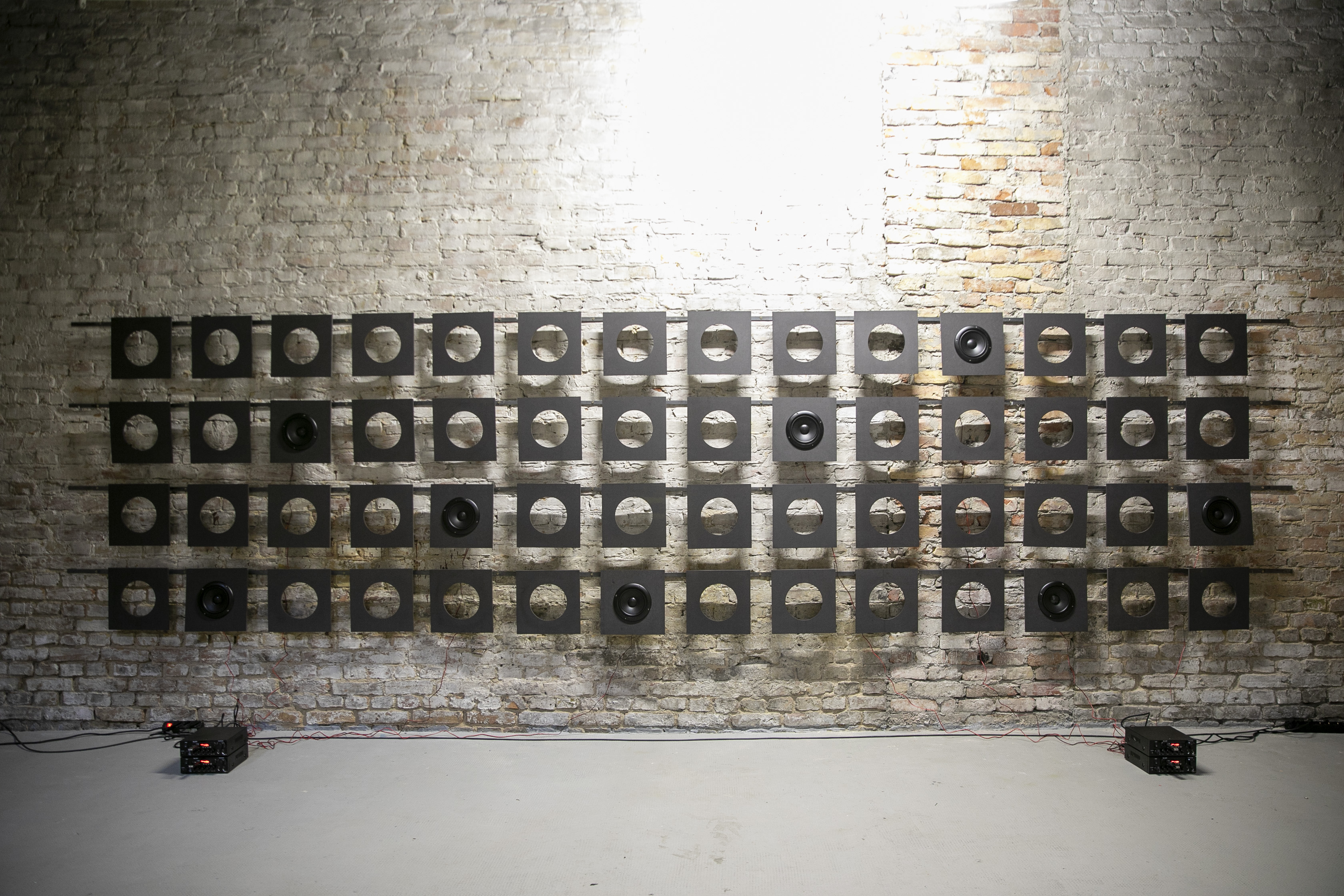
Schreie, 2022, Sound Installation, 31 Min 30 Sec, MDF, Speakers, Steel, Amplifiers
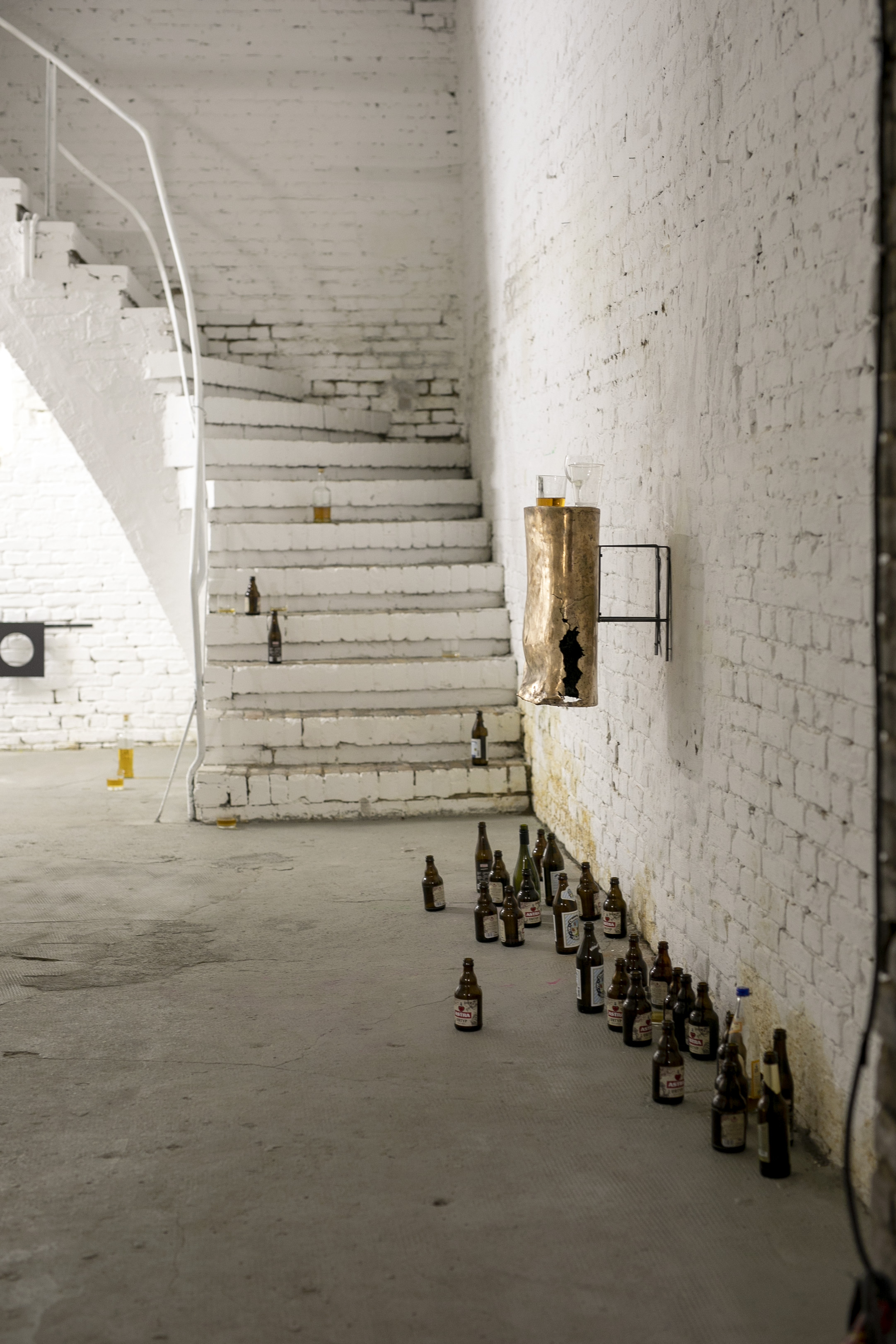
Installation View at SOMA 300, Berlin

A Smooth Exit, 2022, Metal, Aluminium, Rolls, Hinges 150 x 375 cm
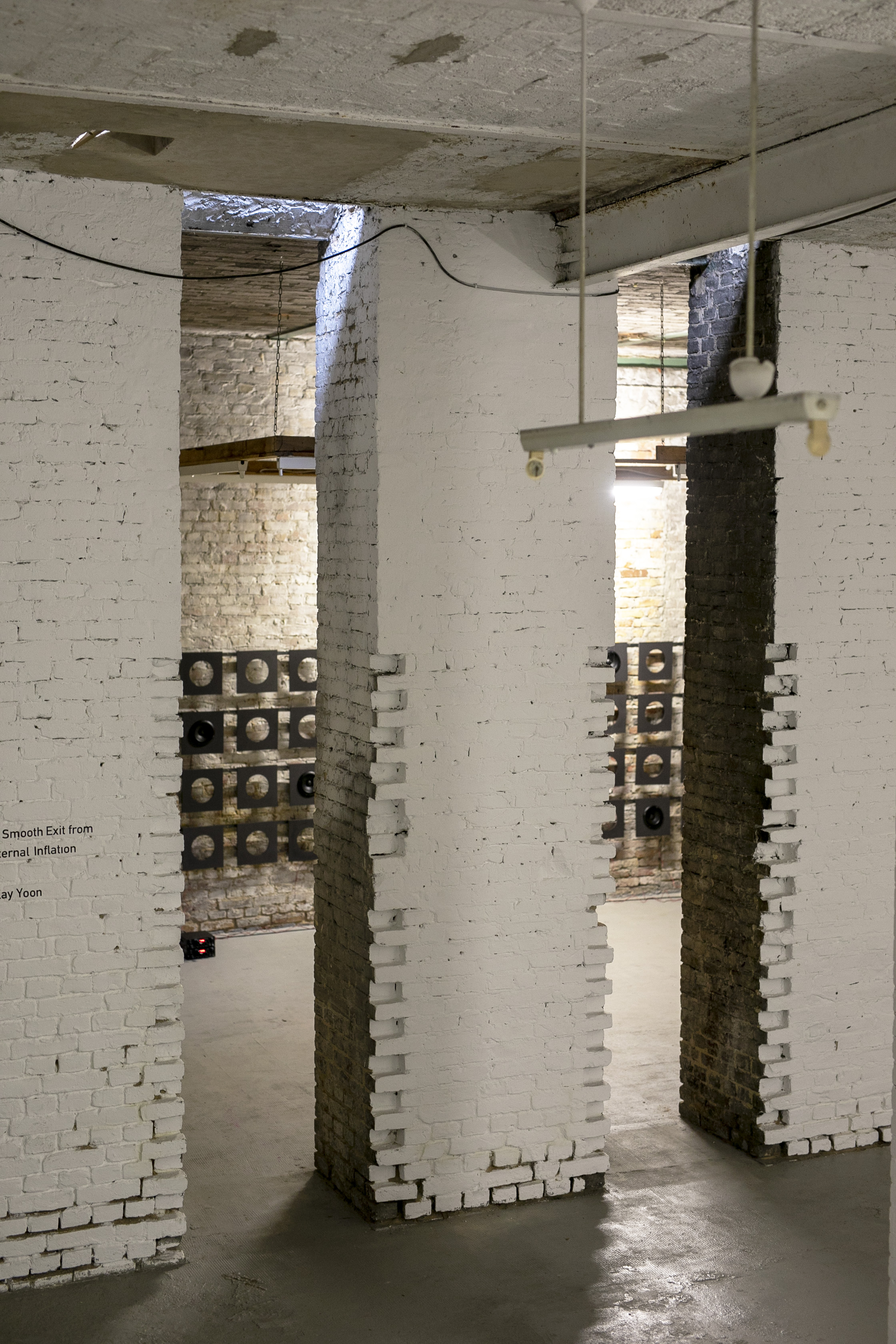
Installation View at SOMA 300, Berlin

femme 2022 Chairs, 52 x 57 x 210 cm
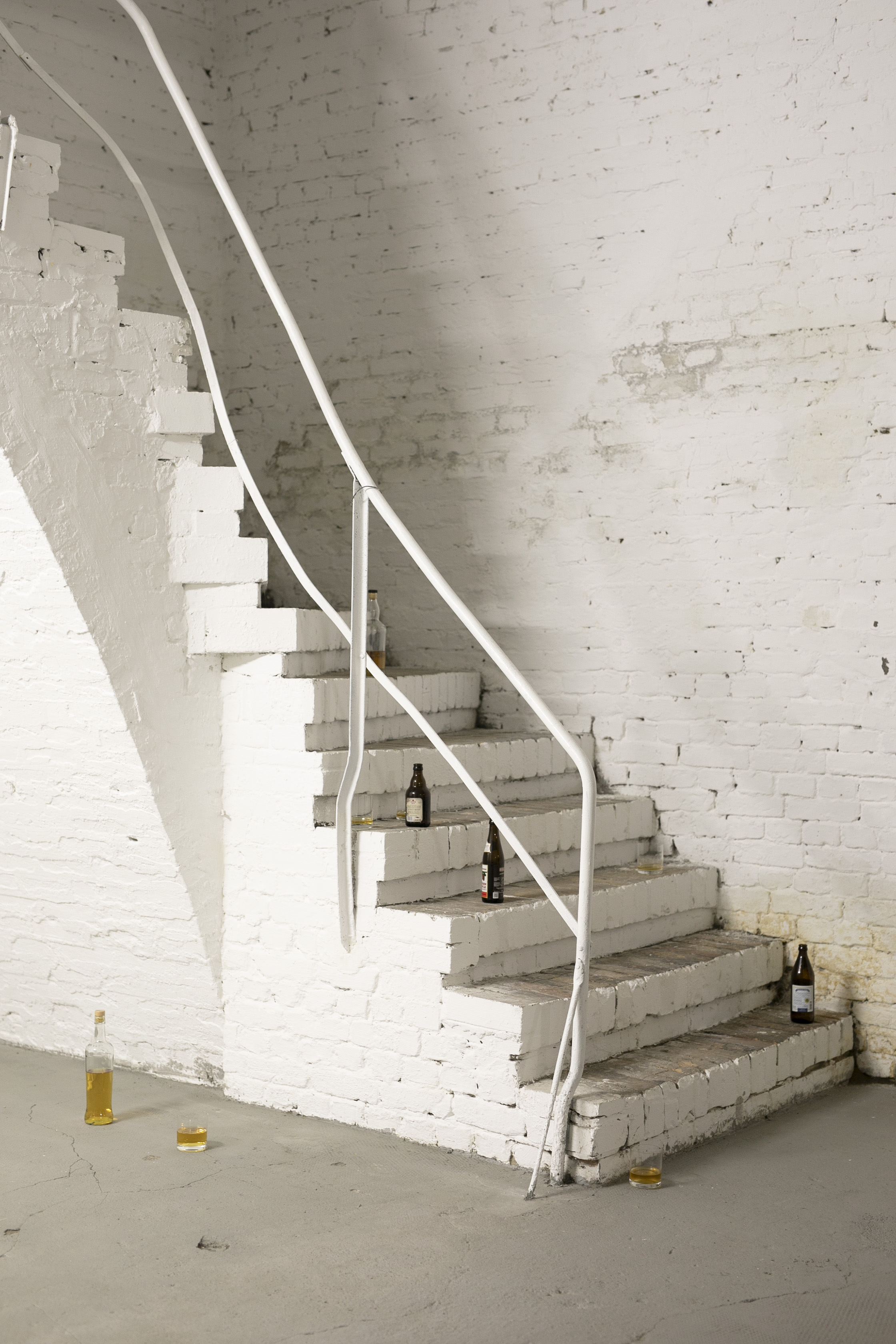
Installation View at SOMA 300, Berlin

Installation View at SOMA 300, Berlin
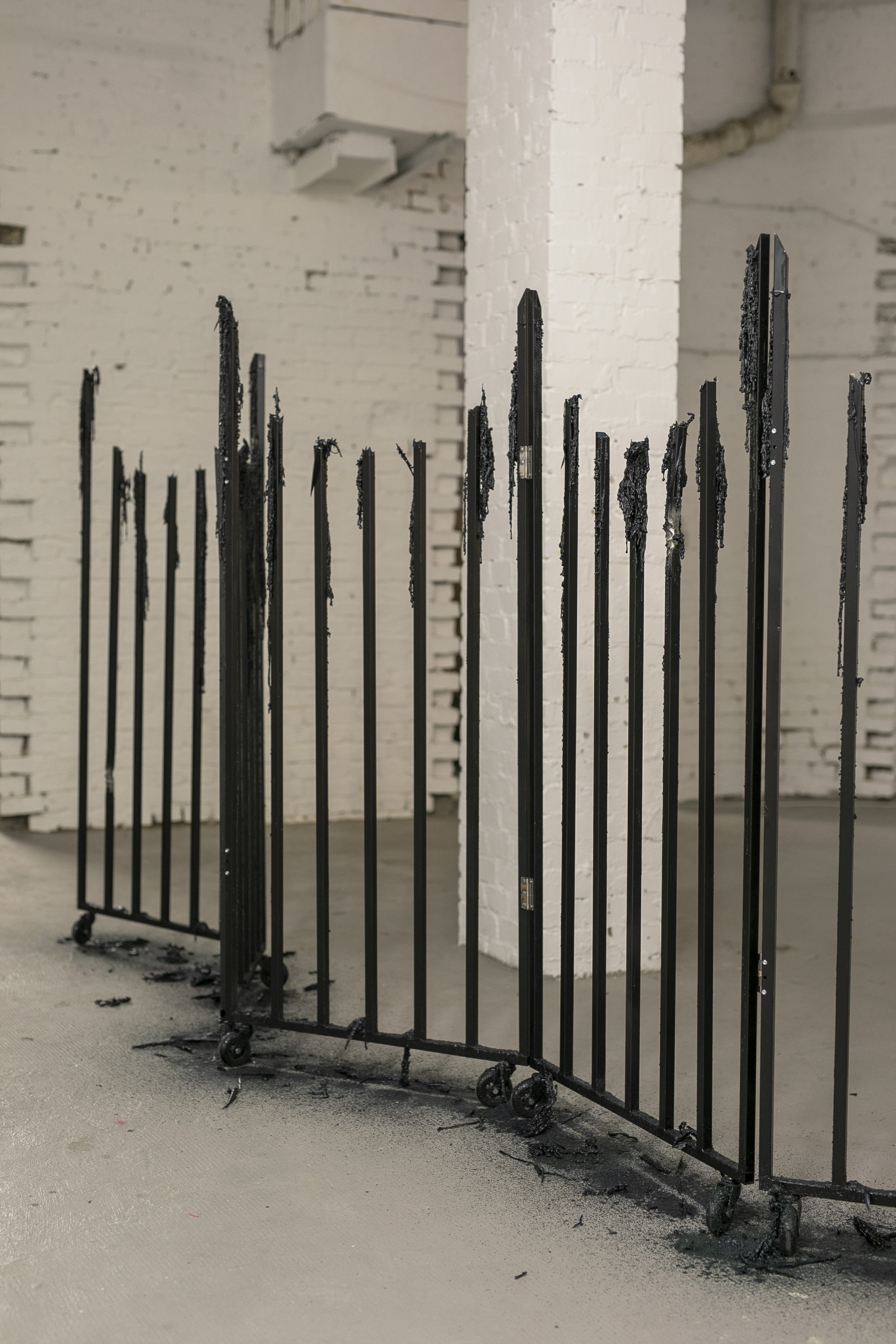
Installation View at SOMA 300, Berlin

Installation View at SOMA 300, Berlin


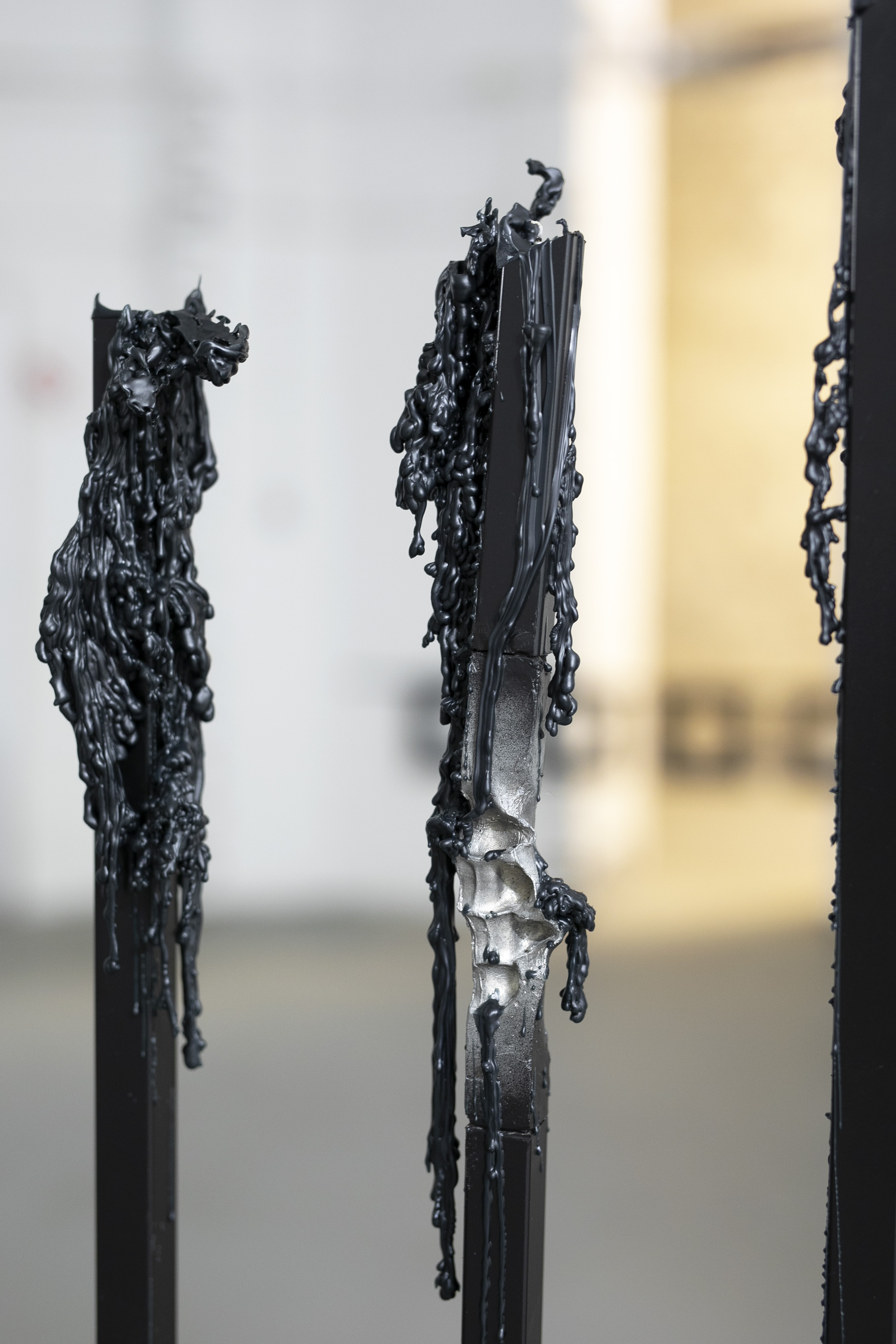
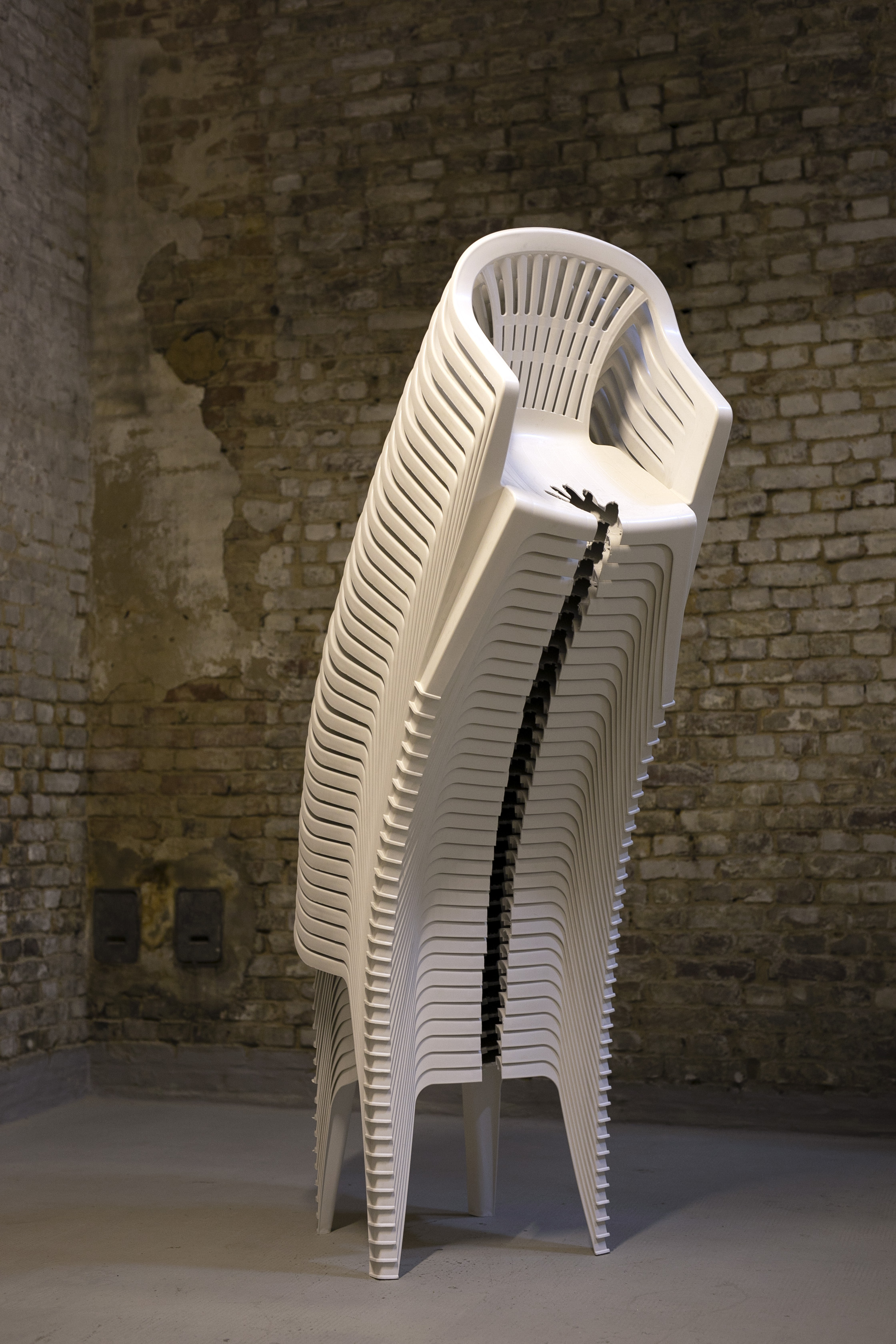
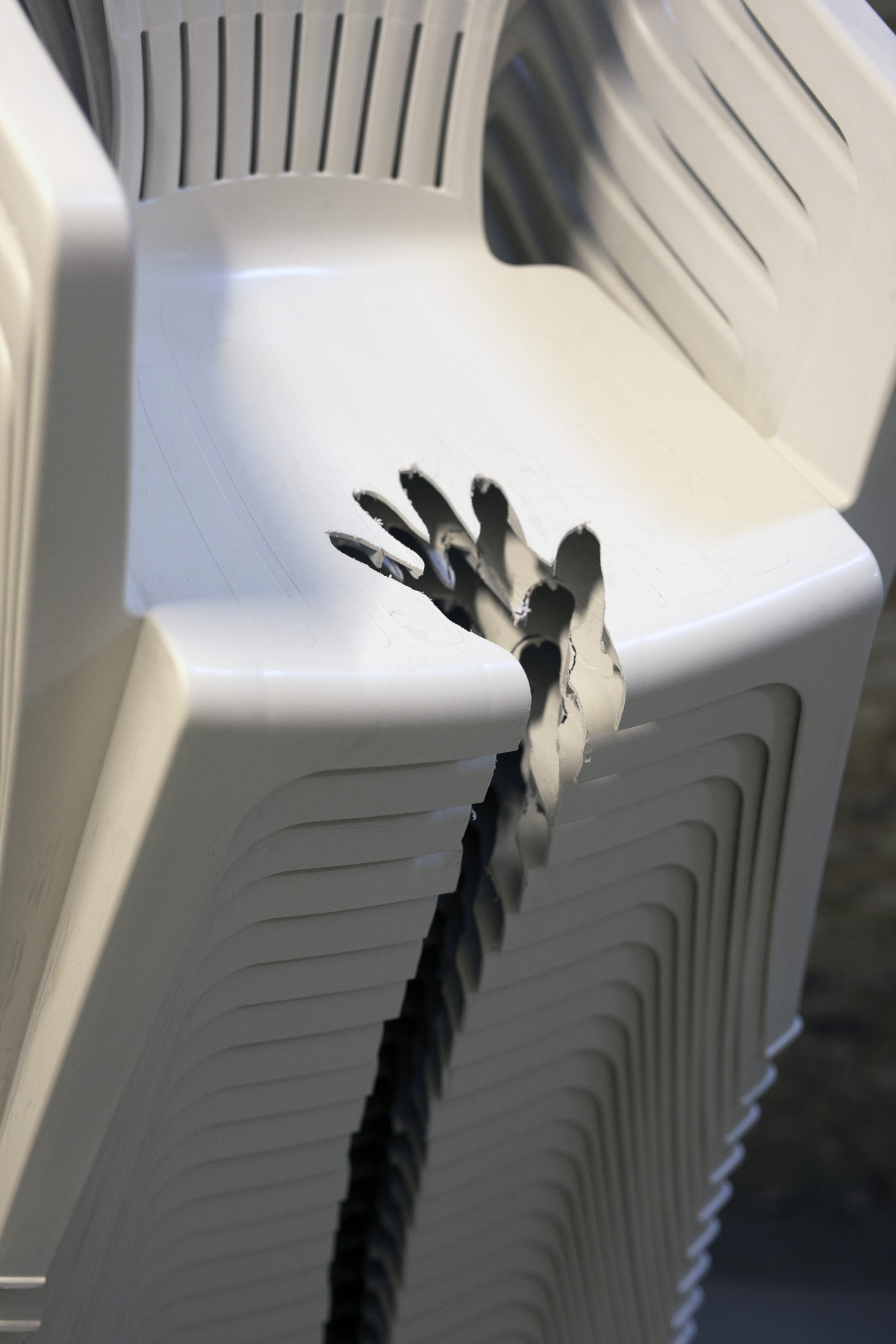
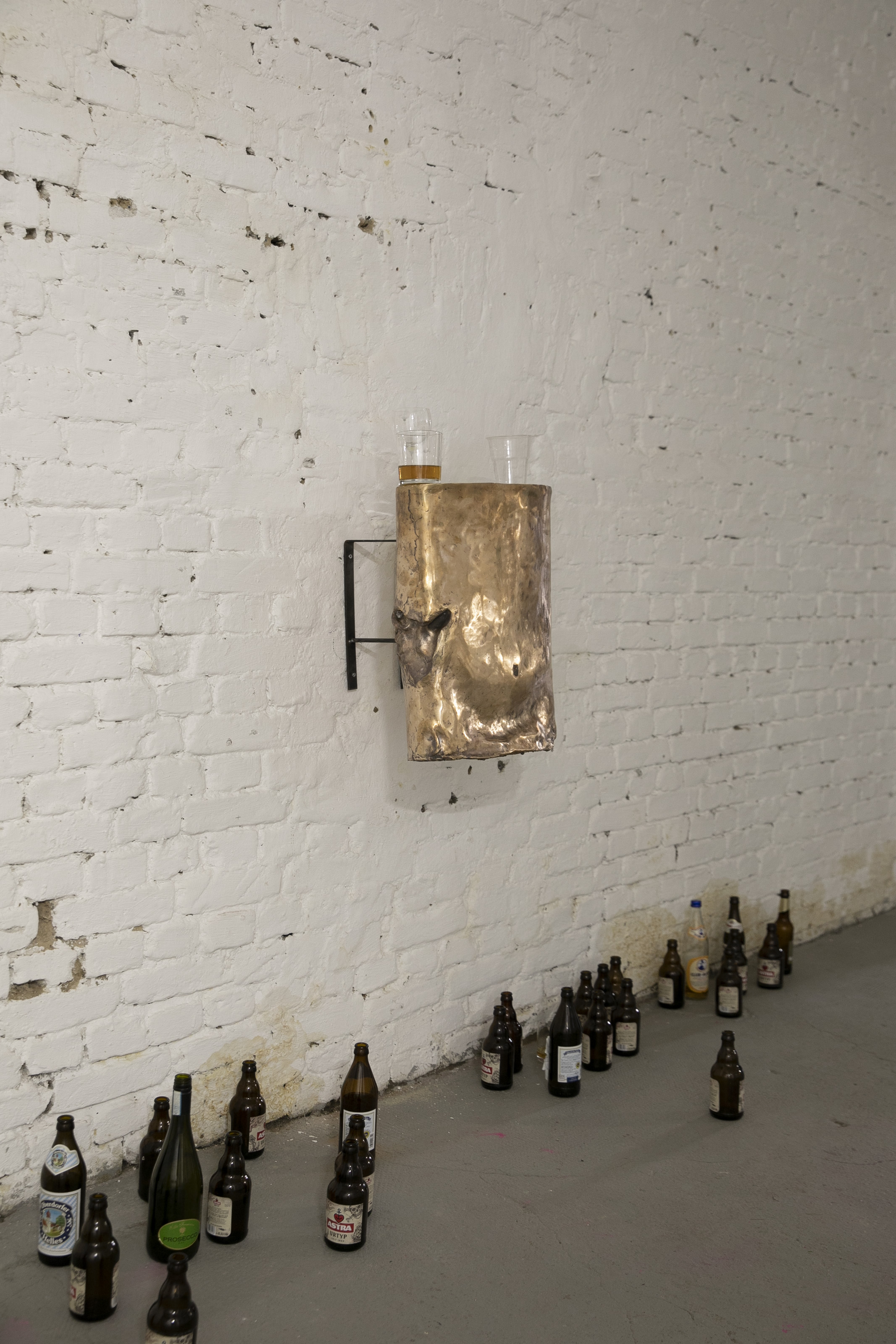 Selfportrait, 2022, Bronze, 40 x 55 cm
Selfportrait, 2022, Bronze, 40 x 55 cm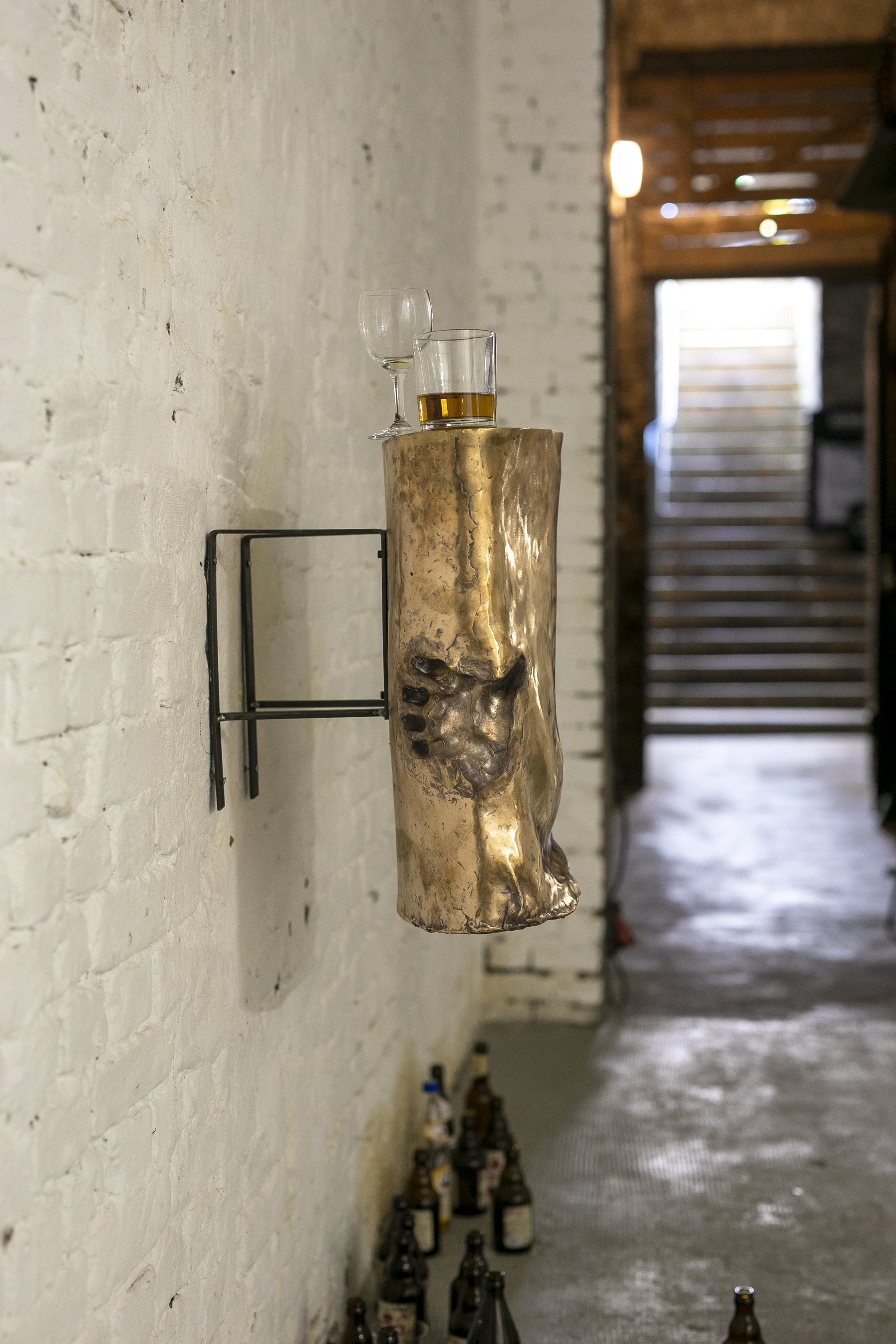
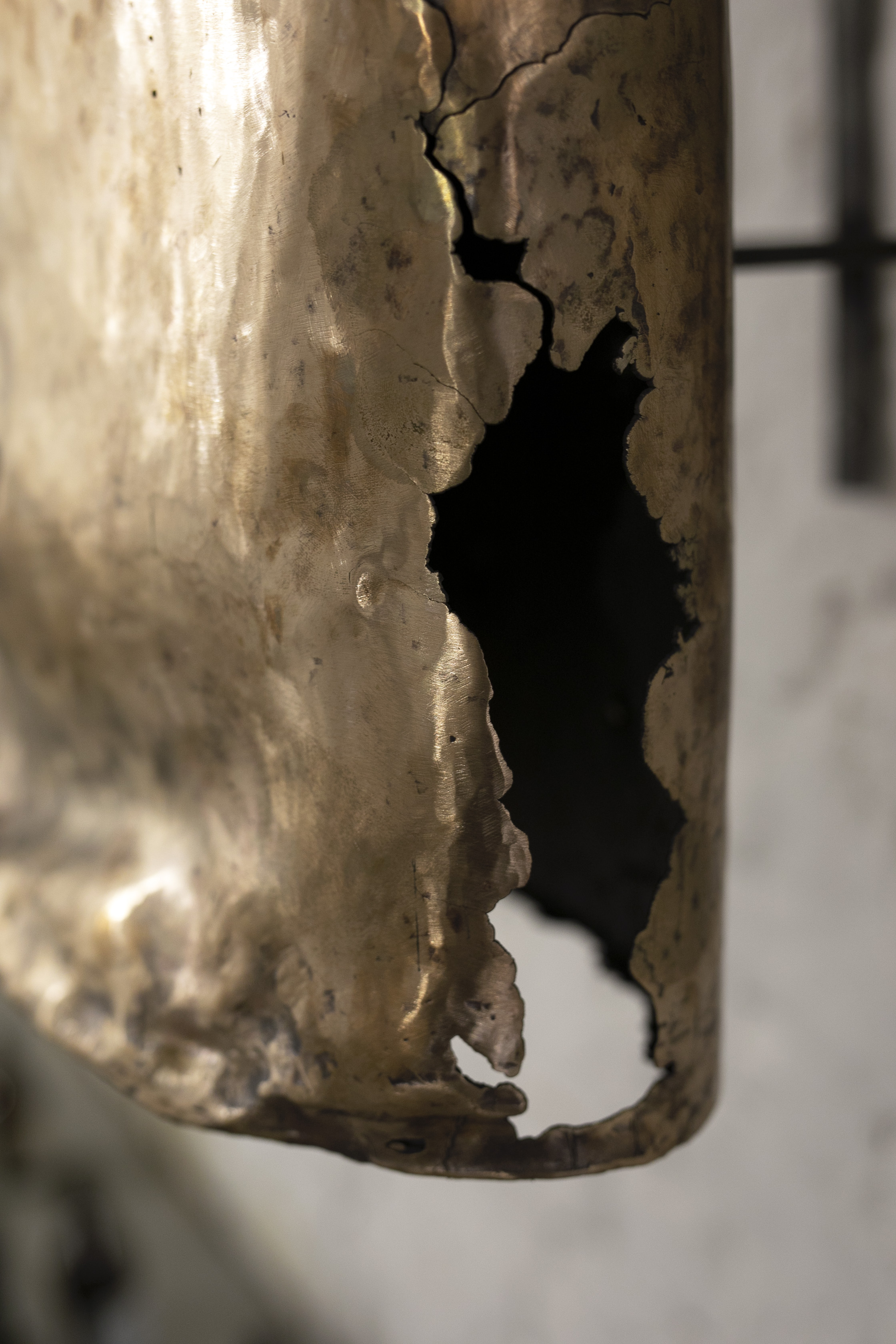
A Smooth Exit from Eternal Inflation
Kay Yoon
29.07.2022–20.08.2022
SOMA 300
A sociopolitical or physical space in which walls are built to limit its subject unsettles the artist, Kay Yoon. She observes that walls are not only material barriers but also invisibly permeate and assist in building larger structures of power. In her solo exhibition “A Smooth Exit from Eternal Inflation,” Yoon navigates a labyrinth of blockades to find the edge of its perimeters and to learn whether an unobstructed openness even exists beyond a seemingly infinite expansion of walls.
The exhibition borrows its title from Stephen Hawking’s paper about the multiverse. It serves as a metaphor to explore the forces that control and consume the artist’s identity within spaces she battles to break down walls and find “a smooth exit” from self-perpetuating structures of power. She also applies it to her personal experience of claustrophobia amidst certain social and systematic irrationalities. Within SOMA 300’s exhibition space, Yoon not only maps her installations according to such spatial understandings but also according to her own sensuous memories of claustrophobic moments. Her recollection of these traumatic experiences finds their way into the exhibition through the smells and sounds that serve to heighten the visual nature of her artworks. They also engage the audience to question the walls that confine them and the exits they seek to find. Parallel to the installations, Yoon presents an essay on memories of existence and escape. The vicious incongruity of her internal view of herself and the external reading of her identity in terms of race and gender conspire to entrap her within walls that limit her self-determination. How does she find “a smooth exit” from the never-ending network of walls that give structure to systematic social injustices?
What appears to some as freedom of choice and movement, presents itself as a restricted space from which Others struggle to find an escape. In a direct, yet deeply personal way, the artist reflects on the absurd architecture of such hegemonic systems. She sees these brutal processes as structures that turn social concepts like gender, identity, family, and culture into public barriers as well as oppressive spaces of private torment. “A Smooth Exit from Eternal Inflation” is an exhibition that gestures towards the creation and demolition of walls that Yoon has collected from the severity of her experiences.
Text: Zakirah Rabaney